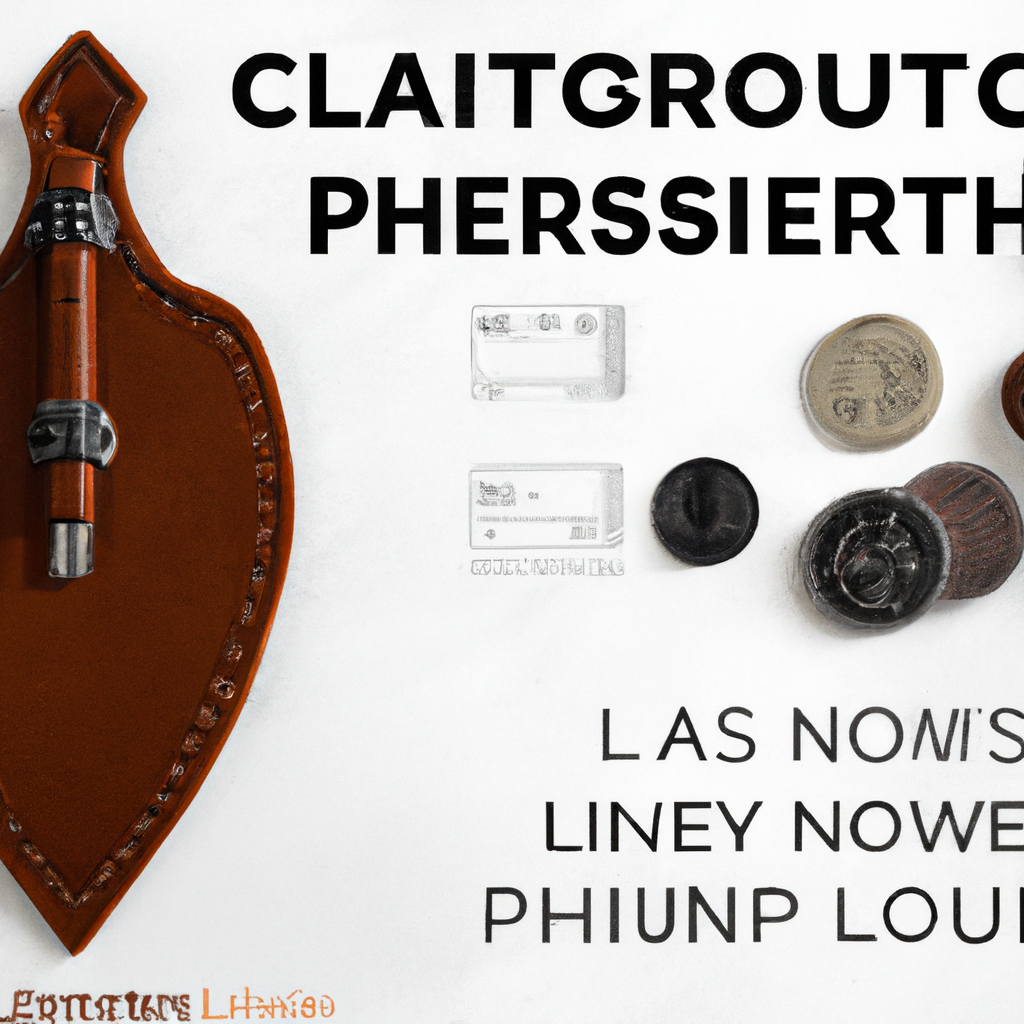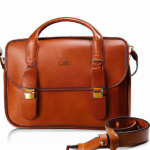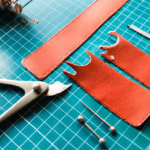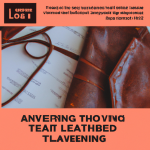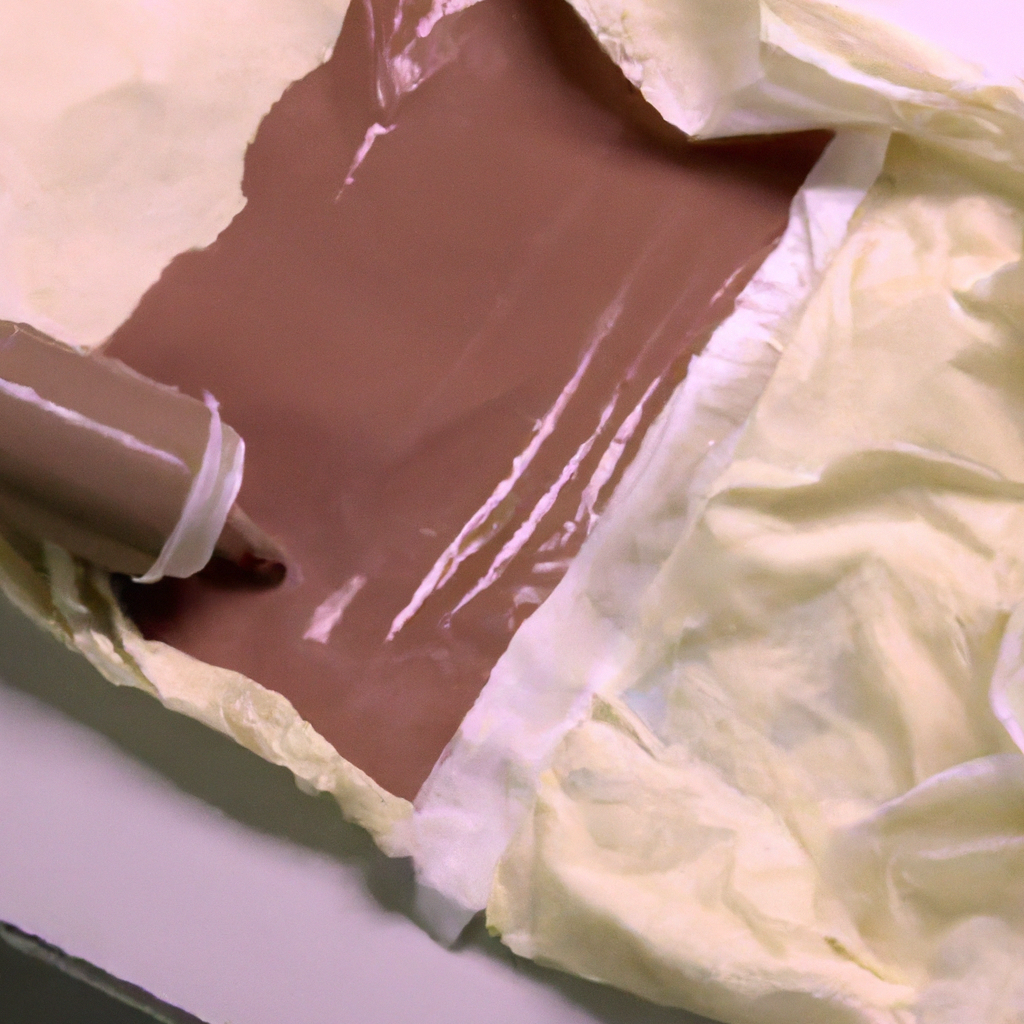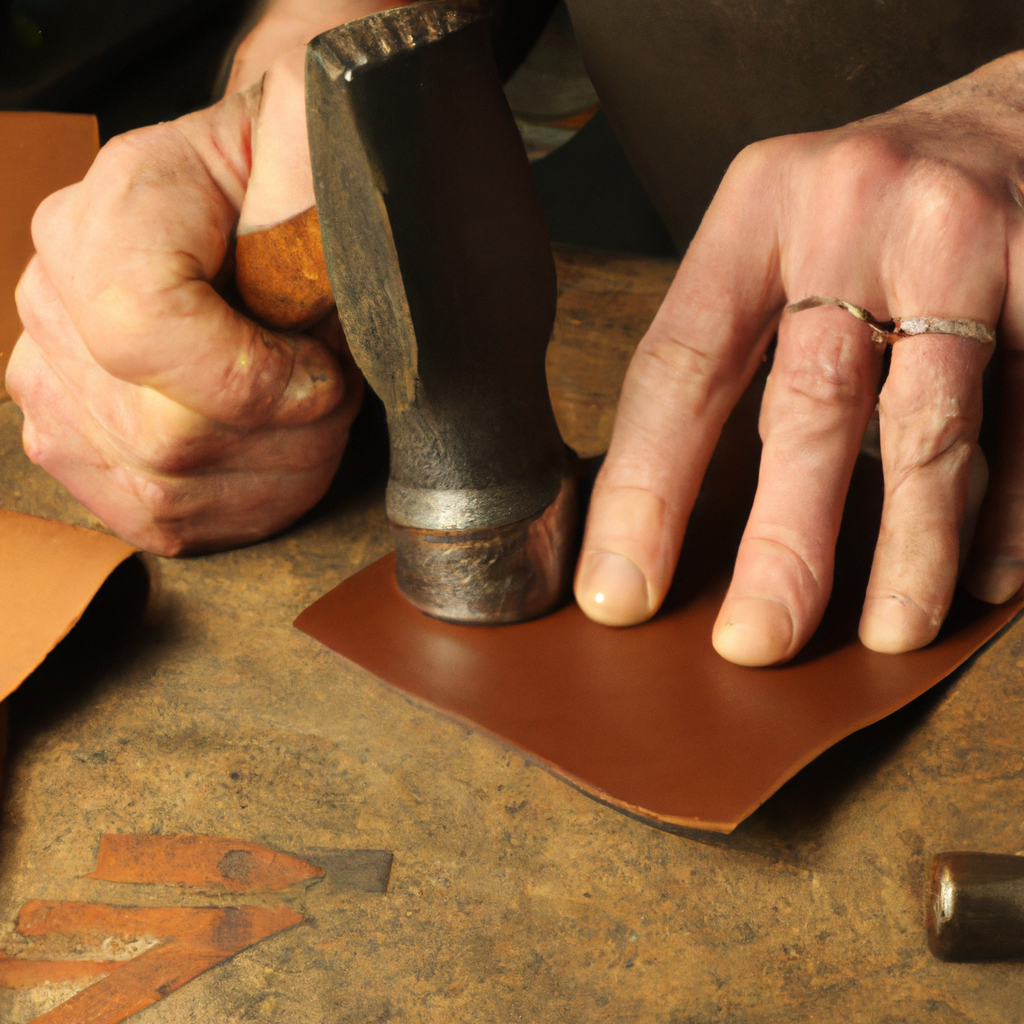If you’ve ever found yourself pondering over how to price your custom leathercraft products in order to maximize profitability, you’re not alone. Determining the right pricing strategy can often be a challenging task, but fear not! In this article, we will delve into the various factors you need to consider and provide you with some valuable tips to ensure that your custom leathercraft business not only thrives but also generates a healthy profit. So, let’s get started and unlock the secrets to pricing your unique creations for success!

1. Understanding Costs
1.1 Material Costs
When it comes to pricing your custom leathercraft products, it’s essential to understand the different costs involved. Material costs play a significant role in determining the overall cost of producing your leathercraft items. This includes the expenses associated with purchasing leather, hardware, and any other materials needed for the production process. By accurately tracking and analyzing your material costs, you can ensure that you are pricing your products correctly to cover these expenses and generate a profit.1.2 Labor Costs
In addition to material costs, labor costs are another crucial component to consider when determining the pricing for your custom leathercraft products. Labor costs encompass the wages or salaries paid to your employees or yourself if you are the sole maker of your leathercraft items. It’s important to calculate the total hours spent on each product and multiply it by the appropriate labor rate to accurately determine your labor costs. Understanding and accounting for these costs will enable you to establish fair and profitable pricing for your products.1.3 Overhead Costs
Apart from material and labor costs, your pricing strategy should also account for overhead costs. Overhead costs refer to the ongoing expenses that you incur to operate your leathercraft business. This can include rent, utilities, insurance, marketing expenses, and other administrative costs. It’s crucial to determine your monthly or annual overhead costs and incorporate them into your pricing calculations. Failing to account for overhead costs can lead to underpricing your products, resulting in a loss rather than a profit.2. Establishing Pricing Strategy
2.1 Market Research
Before pricing your custom leathercraft products, conducting thorough market research is essential. Market research helps you gain a deeper understanding of your target market, including their preferences, buying behaviors, and price sensitivity. By gathering information about your potential customers’ willingness to pay, you can assess the market demand for your products and set prices that are competitive yet profitable. Market research can be done through surveys, focus groups, and analyzing data from similar businesses in your industry.2.2 Competitive Analysis
In addition to market research, conducting a competitive analysis is crucial for establishing a pricing strategy. Studying your competitors allows you to gain insights into their pricing structures, product offerings, and value propositions. By understanding what your competitors are charging for similar leathercraft products, you can position your pricing strategy accordingly. It’s important to strike a balance between being competitive and ensuring that your prices cover your costs and generate a profit.2.3 Value Proposition
Your value proposition plays a significant role in determining your pricing strategy. It’s important to identify and communicate the unique value that your custom leathercraft products offer to customers. This can include factors such as superior craftsmanship, high-quality materials, customizable options, or unique design elements. By emphasizing the value that sets your products apart from competitors, you can justify higher prices and attract customers who are willing to pay for that value.3. Calculating Cost-Plus Pricing
3.1 Determine Total Costs
Cost-plus pricing is a commonly used method for determining the selling price of products. To calculate the cost-plus price, you first need to determine the total costs associated with producing your custom leathercraft items. This includes material costs, labor costs, and overhead costs. By adding up these expenses, you get the total cost of production.3.2 Determine Markup Percentage
Once you have determined the total costs, you need to determine the desired markup percentage. The markup percentage is the amount added to the total cost to arrive at the selling price. The markup percentage should consider factors such as your target profit margin, market demand, and price sensitivity. It’s essential to strike a balance between setting a competitive price and achieving a reasonable profit margin.3.3 Calculate Selling Price
To calculate the selling price using the cost-plus pricing method, simply add the markup percentage to the total cost. The resulting amount will be the price at which you should sell your custom leathercraft products to cover your costs and generate a profit. It’s important to periodically review and adjust your pricing as your costs and market conditions change.
4. Implementing Value-Based Pricing
4.1 Identify Customer Segments
Value-based pricing involves setting prices based on the perceived value that your custom leathercraft products offer to different customer segments. To implement value-based pricing, you first need to identify and segment your customers based on their specific needs, preferences, and willingness to pay. By catering to the unique needs and desires of each customer segment, you can set prices that align with the value they perceive in your products.4.2 Understand Customer Perceptions
Understanding customer perceptions is crucial for implementing value-based pricing. This involves conducting surveys, interviews, or focus groups to gain insights into how customers perceive the value of your custom leathercraft items. By understanding what factors contribute to their perception of value, such as quality, uniqueness, or exclusivity, you can tailor your pricing strategy accordingly.4.3 Set Differentiated Prices
Value-based pricing often involves setting different prices for different customer segments based on their perceived value. Higher value or premium customers may be willing to pay a higher price for your custom leathercraft products, while price-sensitive customers may require more affordable options. By segmenting your customers and setting differentiated prices, you can maximize your profits while satisfying the diverse needs of your customer base.5. Utilizing Pricing Models
5.1 Cost-Based Pricing Model
The cost-based pricing model, as discussed earlier, involves calculating the total costs of producing your custom leathercraft items and adding a markup percentage to determine the selling price. This model ensures that your price covers your costs and generates a profit. However, it’s essential to consider market demand and competition when using this model to avoid overpricing or underpricing your products.5.2 Competitive-Based Pricing Model
The competitive-based pricing model involves setting prices based on the prices of your competitors. By analyzing the pricing strategies of similar businesses in your industry, you can position your prices accordingly. This model is useful if you want to be directly competitive with your pricing, but it’s important to ensure that your prices still cover your costs and allow for a reasonable profit margin.5.3 Value-Based Pricing Model
The value-based pricing model, discussed earlier, focuses on setting prices based on the perceived value of your custom leathercraft products. By understanding what your customers value and are willing to pay for, you can set prices that reflect that value. This model can help you capture premium prices for high-value customers and maximize your profitability.6. Considering Profit Margin
6.1 Setting Profit Margin Goals
Profit margin goals are an essential aspect of pricing your custom leathercraft products. By setting specific profit margin targets, you can ensure that your prices generate the desired level of profitability. Profit margin goals should consider a balance between covering your costs and ensuring a reasonable return on your investment and efforts.6.2 Factoring in Price Sensitivity
Price sensitivity refers to how customers react to changes in prices. It’s crucial to consider price sensitivity when determining your profit margins. Some customers may be highly price-sensitive, requiring more affordable pricing options, while others may be less sensitive and willing to pay premium prices for higher value. By understanding the price sensitivity of your customer segments, you can adjust your profit margins accordingly.6.3 Adjusting Prices
Monitoring your profit margins and regularly reviewing your pricing is essential for long-term profitability. As costs change, market conditions fluctuate, or customer preferences evolve, pricing adjustments may be necessary. Regularly reassessing and adjusting your prices allows you to stay competitive, maintain profitability, and meet the changing demands of your customers.7. Incorporating Pricing Psychology
7.1 The Power of Anchoring
Anchoring is a pricing psychology tactic that involves setting a higher initial price as a reference point, making subsequent prices appear more reasonable. By showcasing a higher initial price, customers perceive any lower prices as discounts or value for money. Incorporating anchoring techniques in your pricing strategy can influence customer purchasing decisions and increase perceived value.7.2 Utilizing Psychological Pricing Tactics
Psychological pricing tactics involve using pricing strategies that appeal to customers’ subconscious perceptions. Examples of psychological pricing tactics include setting prices just below a whole number (e.g., $9.99 instead of $10) or emphasizing the value of savings (e.g., “20% off”). By leveraging these tactics, you can create a perception of affordability and value, influencing customers’ willingness to pay.7.3 Applying Price Bundling Strategies
Price bundling involves offering multiple products or services as a package for a discounted price. This strategy can create a perception of added value and incentivize customers to purchase more. For example, you could bundle a leather wallet, belt, and keychain together at a lower price than if each item were purchased individually. Price bundling can help increase sales and overall profitability.8. Monitoring and Adjusting Prices
8.1 Regular Price Reviews
Regularly reviewing your prices is essential to ensure that they remain competitive and profitable. By monitoring your costs, market conditions, and customer preferences, you can identify opportunities to adjust your prices. Regular price reviews allow you to adapt to changes in the market, maintain a competitive edge, and maximize your profitability.8.2 Tracking Market Trends
Staying up-to-date with market trends in the custom leathercraft industry is crucial for successful pricing. Keep an eye on shifts in customer preferences, emerging designs or styles, and pricing strategies adopted by your competitors. By tracking market trends, you can adjust your prices to align with current market demand and maintain a competitive position.8.3 Assessing Customer Feedback
Customer feedback provides valuable insights into how your pricing strategy is perceived and whether it aligns with customer expectations. Pay attention to customer feedback regarding your prices, value proposition, and perceived quality. By actively seeking and incorporating customer feedback into your pricing decisions, you can refine your strategy and make informed pricing adjustments.9. Value-Added Services and Upselling
9.1 Identifying Value-Added Services
Offering value-added services alongside your custom leathercraft products can help differentiate your brand and justify higher prices. These services can include personalization options, customization, leather care instructions, or even repairs and maintenance services. By identifying value-added services that complement your products, you can enhance the perceived value for customers and justify higher price points.9.2 Pricing Additional Services
When pricing additional services, it’s important to consider the costs associated with providing those services. This includes any additional labor or materials required, as well as any overhead costs. By accurately determining the costs and factoring them into your pricing, you can ensure that the price for additional services covers your expenses and generates a profit.9.3 Upselling Techniques
Upselling involves persuading customers to purchase higher-priced or additional products or services. By utilizing upselling techniques, you can increase the average transaction value and profitability of each sale. This can include offering upgrades, suggesting complementary products, or providing special discounts for bundling products together. Upselling techniques can help maximize your revenue while providing added value to customers.Will Using High-Quality Leather Impact the Price and Profitability of My Custom Leathercraft?
Using the best leather for accessories will definitely impact the price and profitability of your custom Leathercraft. High-quality leather is a key selling point for customers willing to pay more for a superior product. Investing in top-notch materials can ultimately lead to higher margins and increased demand.

